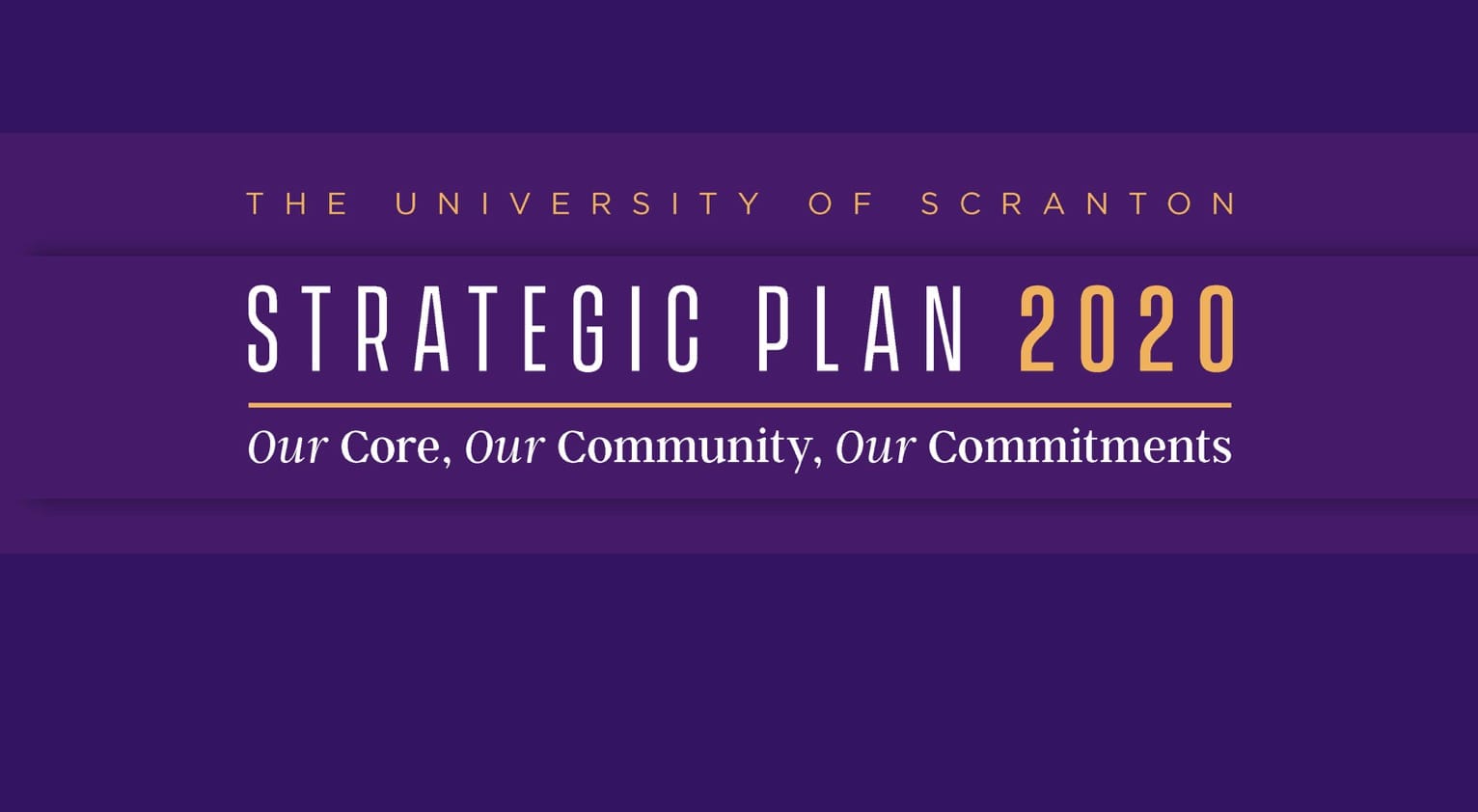University Publishes 2020-2025 Strategic Plan

The University of Scranton has launched a website to share details of its 2020-2025 Strategic Plan, which “faces the future while embracing our deepest and most central traditions,” according to Rev. Scott R. Pilarz, S.J., president of The University of Scranton.
“Grounded in our Catholic and Jesuit mission, the plan will guide our transformative work and help us navigate changes, challenges and opportunities for the coming five years, though we believe its impact will be felt well beyond,” wrote Father Pilarz to members of the University community announcing the strategic plan, which was approved by the University’s Board of Trustees in September. “No doubt, the strategic plan we crafted together is lofty in its aspirations, and we launch it at a significant crossroads for higher education. But we know that it is also together that we will achieve concrete, positive outcomes on behalf of our students, campus community and broader Scranton family.”
The five goals of the University’s Strategic Plan 2020 are as follows:
The Humanities as a Foundation for Transformation: to ensure that the Scranton student experience is transformational, integrated and grounded in the humanities as a pathway to understanding the human experience in its many dimensions.
Faith, Passion and Purpose – The Student’s Journey: to engage students as individuals through personal attention that helps them explore their faith, discern their purpose and pursue their passion, as they work to create a more just and sustainable world.
Advancing the University Through Innovation: to advance the University into the future by challenging ourselves to educate and support an ever-changing, diverse landscape of students in ways that are affordable, relevant and innovative.
Diversity and Inclusion – A Welcoming and Supportive Community: to reflect and understand the diversity of the world by demanding that diversity be a priority as we build an inclusive community and campus culture, develop and deliver our education, and shape our student experience.
Growing Partnerships in Our Mission: to invite and inspire our alumni, parents, friends and community to be partners in the mission of the University.
The plan builds “on areas of excellence and initiatives underway, including the high-impact learning processes, the exciting work of cross-disciplinary humanities (the Slattery Center for Humanities), and a multi-year collaborative strategic enrollment plan, a process that has already resulted in new academic student support and majors,” said Father Pilarz.
The strategic plan was developed through a comprehensive, collaborative effort led by members of the University Planning Committee that incorporated input from students, faculty, staff, administrators, alumni, parents and the board of trustees.
“I am grateful to the campus community for their input and collaboration, which went into the development of this plan. Together, we concentrated on making a strategic plan unique to our mission and one that will accelerate the excellent education at the University,” said Jeff Gingerich, Ph.D., provost and senior vice president for academic affairs.
“Our plan, as it should be, is rooted in assessment and analysis, including our 2019 Middle States self-evaluation study and the (Association of Jesuit Colleges and Universities) 2018 Mission Priority Examen, which examined our Catholic and Jesuit tradition and the deep and active life of mission on our campus,” said Father Pilarz in a video about the plan. “We are also proud of the ways the plan supports the Universal Apostolic Preferences, a set of core priorities embraced by the Society of Jesus just last year.”
According to Kate Yerkes, assistant provost for planning and institutional effectiveness, the planning process itself is beneficial to the University.
“The value of planning is not just this product, but the coming together of the members of our community to examine our strengths, and be open to ways to grow, innovate and improve,” said Yerkes.
“Our plan captures the commitment to community the mutual respect and care for each other that has always been and will always be the hallmark of The University of Scranton,” said Father Pilarz.
Details of the plan can be found at the University’s Strategic Plan 2020 website.






